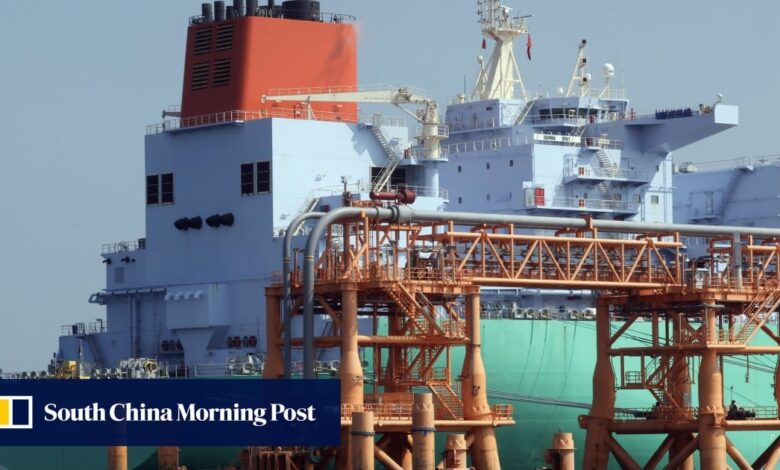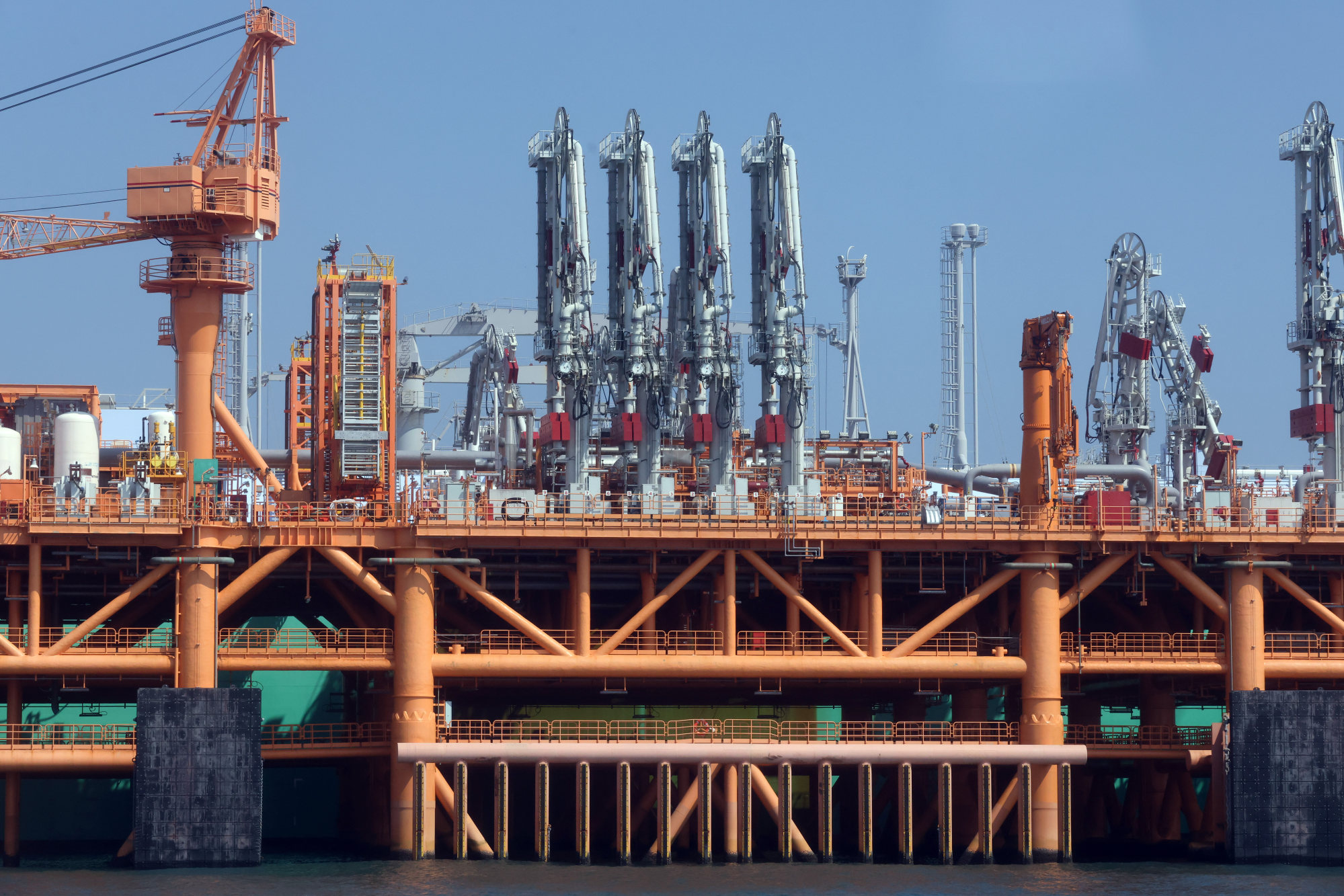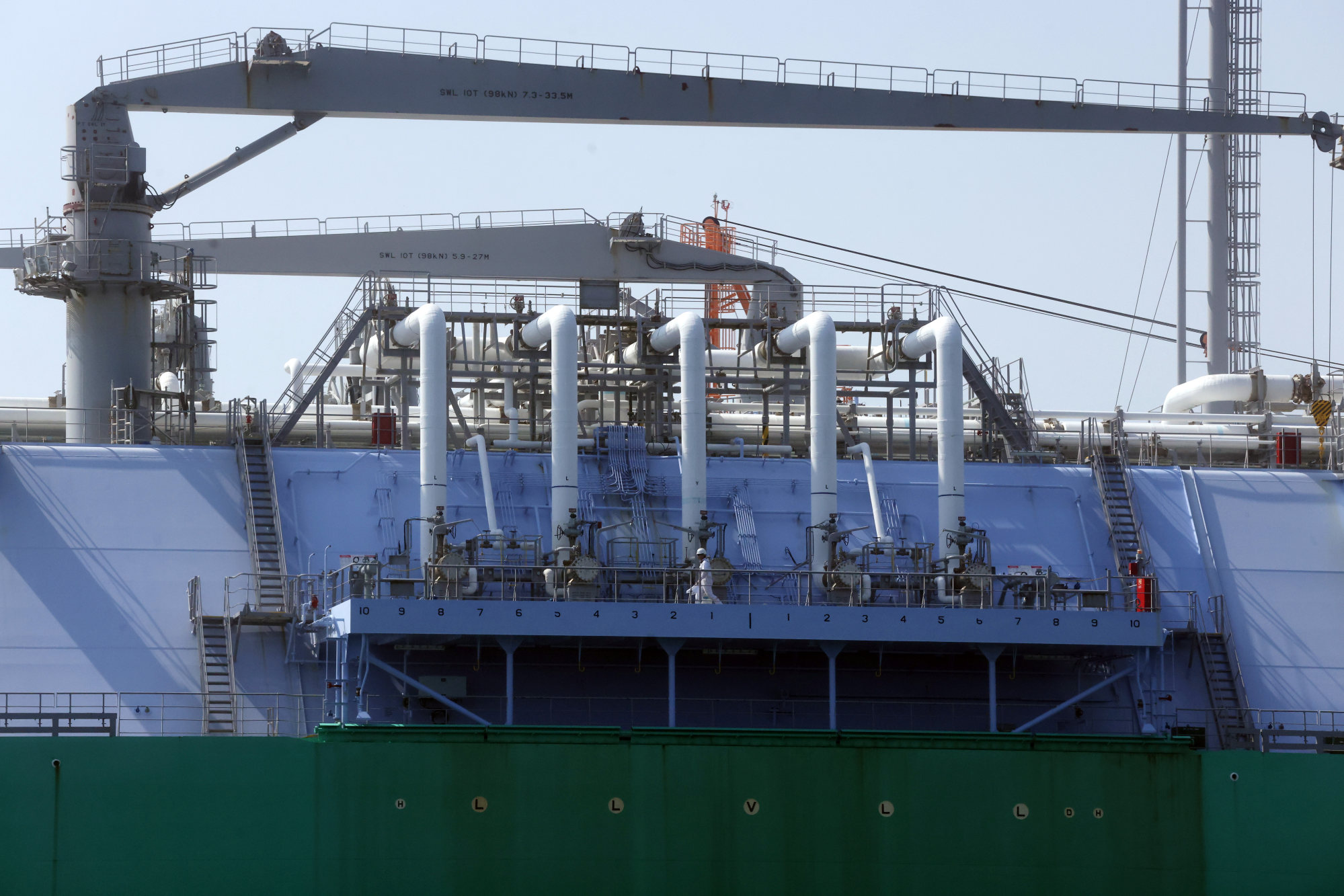Hong Kong power firms unveil offshore LNG terminal, but environmentalists raise concerns over carbon reduction potential, impact on energy bills

[ad_1]
Hong Kong’s two power companies have unveiled the city’s first offshore liquefied natural gas (LNG) terminal, which has been operating since July, but environmentalists have raised questions about its carbon reduction capacity and impact on electricity bills.
“Its storage capacity is the largest in the world,” Lee said, before leading a press tour at the facility.

“Natural gas comes to Hong Kong through two routes: using very long pipelines to deliver it to Hong Kong … or bulk delivery, in which the gas is first liquefied for more convenient transport to other places.
“This method increases the flexibility, stability and price competitiveness because we are not bound by a rigid pipeline to get the gas to where you want.”
Lee said the procurement contracts for the terminal were “signed at the right time” before the war between Russia and Ukraine broke out in February last year.
The facility has a capacity of 263,000 cubic metres, which Lee said was equivalent to the volume of about 100 Olympic-sized swimming pools.
Drones, crawler robot at Hong Kong’s CLP Power cut inspections from 12 days to 1
Drones, crawler robot at Hong Kong’s CLP Power cut inspections from 12 days to 1
The terminal is stationed in the waters to the east of the Soko Islands and is equipped with a double-berth jetty to offload the LNG. Storage tanks and facilities are also available to convert it back to gas.
The natural gas will then be transported using a 45km and 18km underwater pipeline to CLP Power’s generating station in Lung Kwu Tan and HK Electric’s plant on Lamma Island, respectively.
Construction of the HK$8 billion (US$1 billion) offshore terminal began in 2020 and it was put into service in July. Lee said its floating storage technology and regasification device was the first of its kind in the city.
Since July, the terminal has received four shipments, each carrying about 150,000 cubic metres of LNG, according to Lee.
Power bill cuts not enough to help Hong Kong Island’s poorest residents: NGO
Power bill cuts not enough to help Hong Kong Island’s poorest residents: NGO
The idea of substituting coal for natural gas has persisted since the mid-1990s, as the former emits twice as much carbon dioxide during combustion.
In 2021, Hong Kong authorities pledged to cut the city’s carbon emissions by 50 per cent from the 2005 level of 38,100 gigagrams before 2035 and ultimately achieve net-zero emissions by 2050.
The city’s two power companies have since praised natural gas as an “important bridge transition fuel” that plays a key role in meeting the government’s long-term decarbonisation targets.
The proportion of natural gas in the city’s overall fuel mix had increased to about 50 per cent by 2020.
Tom Ng Hon-lam, a campaigner at Greenpeace, said introducing the offshore terminal was a step backwards in tackling climate change.
“Natural gas is not natural and is a kind of fossil fuel. Don’t be fooled by its name,” he said. “It is also mainly methane, a kind of greenhouse gas much more potent than carbon dioxide. Leakage is unavoidable.”

According to the United States Environmental Protection Agency, methane is more than 25 times as potent as carbon dioxide at trapping heat in the atmosphere, strengthening the greenhouse effect.
“Renewable energy is the solution to stabilise electricity prices because only a local supply will not be affected by international energy prices,” Ng said.
William Yu Yuen-ping, the chief executive of NGO World Green Organisation, said whether the terminal could help lower the city’s electricity prices remained a question.
“On one hand, the investment in the terminal will be reflected in the basic tariff rate. It only matters when the power companies enter it into their accounts,” the energy economist said. “On the other hand, natural gas prices have declined worldwide. The terminal helps them source the gas globally, thus lowering the fuel surcharge.”
Firm blames Hong Kong blackout on staff lacking alertness, poor cable labelling
Firm blames Hong Kong blackout on staff lacking alertness, poor cable labelling
Hong Kong electricity tariffs are made up of two main components: a basic tariff rate largely based on the power company’s asset value and a fuel clause charge based on international fuel prices.
The Environment and Ecology Bureau on Monday said it aimed to eliminate coal and shift to natural gas and zero-carbon energy sources for daily power generation by 2035.
On the impact of fuel prices, a spokesman said: “The two power companies have factored the natural gas supplied from the receiving terminal into their overall fuel cost estimates to determine the fuel prices in 2023 and beyond.
“Since the basic tariff rate is affected by a basket of factors … it is difficult to estimate the impact for individual capital items.”
[ad_2]
Source link





